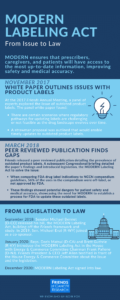Pharmaceutical Labels
Counterfeiting has become a serious threat to the global health and wellness sector, affecting industries like food, pharmaceutical, beauty, among others. As a result, pharma companies are increasingly looking for ways to protect their products from being counterfeited.
Adding anti-counterfeiting features to Pharmaceutical Labels is an easy way to help prevent the illegal sale of counterfeit medications. These labels can include different technologies, including micro-printing, invisible inks, taggants and serialization.

The labels can also have holograms and color-shifting inks to deter counterfeiters from using them. These technologies can also be combined with barcode technology to create a tracking and tracing system that allows for tracking and verification of the product from the manufacturer all the way to the consumer.
Pharmaceutical Labels and Anti-Counterfeiting Measures – Protecting Your Bra
In a security triangle, overt measures are the first line of defense, which consumers can easily see and identify. They can be as simple as a hologram or tactile printing. These can be used to deter tampering as well as unauthorized substitution of ingredients.
These types of security features can be printed on packaging or on the labels themselves. These can be combined with other security elements, such as tamper-evident seals and serialization, to create an effective anti-counterfeiting strategy.
A second line of defense is covert measures, which are hidden from the consumer and are harder to spot. These can include things like ink taggants or watermarks that are only visible through a more sophisticated hand-held reader, and invisible inks and UV inks.
Another layer of security is digital features that allow for internet-based authentication throughout the supply chain. These can be as simple as a human-readable number or as complex as copy protection patterns, which can be read through the use of a mobile device.
Some of these digital security features can be integrated with other anti-counterfeiting measures, such as tamper-evident labels and tactile printing. These can help brand owners stay one step ahead of counterfeiters by allowing them to identify and respond to threats more quickly.
Increasingly, pharmaceutical companies are choosing to adopt a three-tiered approach to protecting their packaging from counterfeiting. Level one includes overt features, level two uses covert security, and level three incorporates forensic technology to track down counterfeit products.
A third and final layer of protection involves tamper-evident features that can be detected through a hand-held reader, such as a scanner or an infrared camera. These are the most common type of anti-counterfeiting labels, and can be as simple as a tamper-evident seal or as advanced as tactile printing.
Ultimately, incorporating the most effective anti-counterfeiting solutions into the packaging of a pharmaceutical product is key to stopping counterfeiting from taking place. These solutions can be as simple as tamper-evident labeling or as complicated as incorporating multiple security features, such as barcodes and writable databases, into the packaging itself.